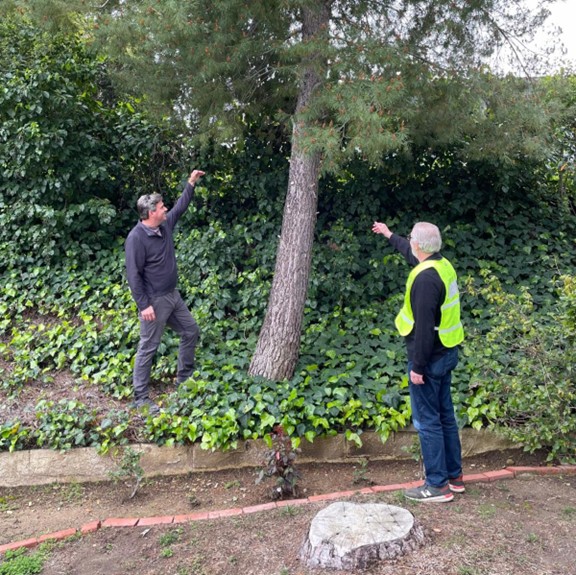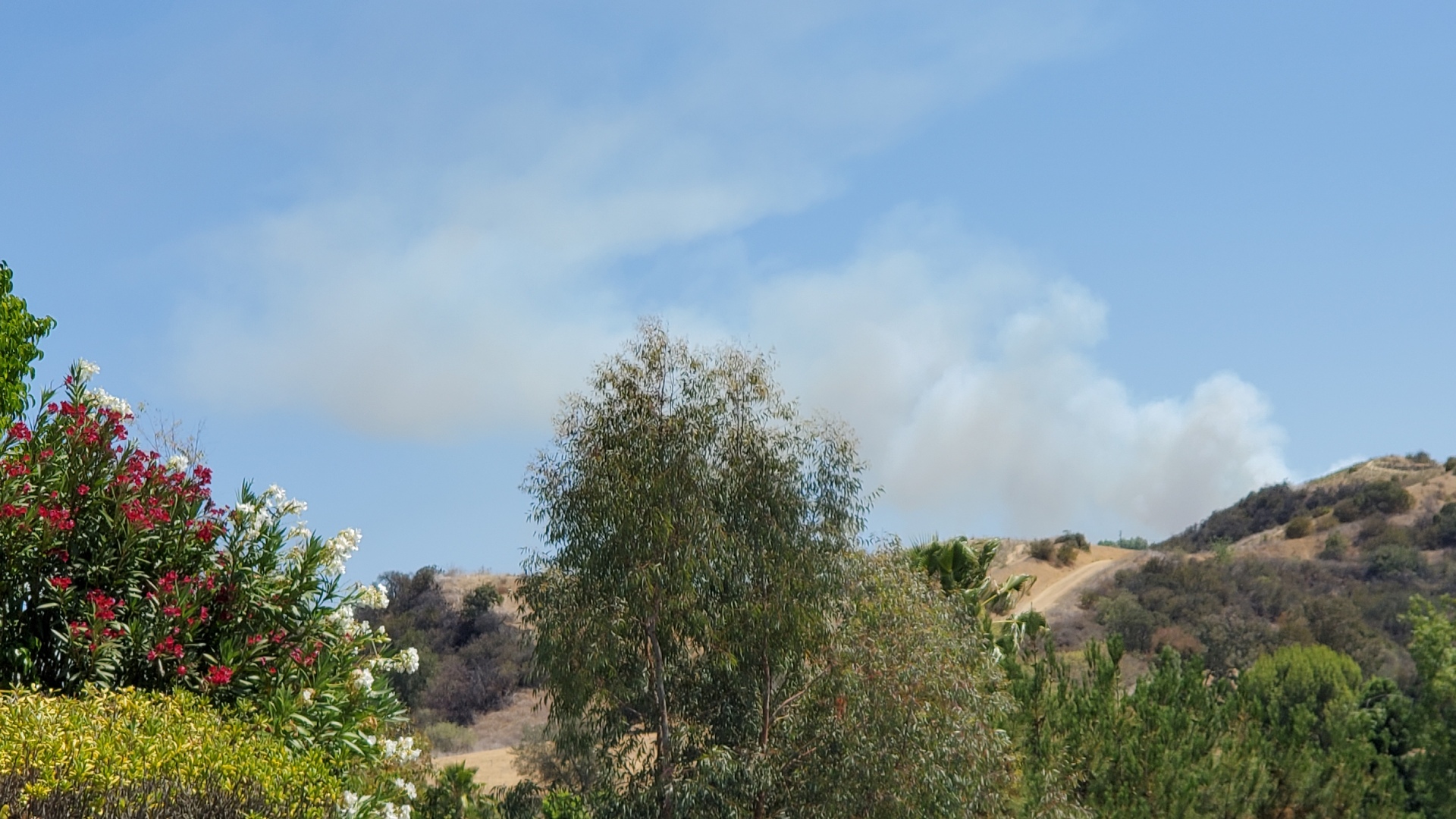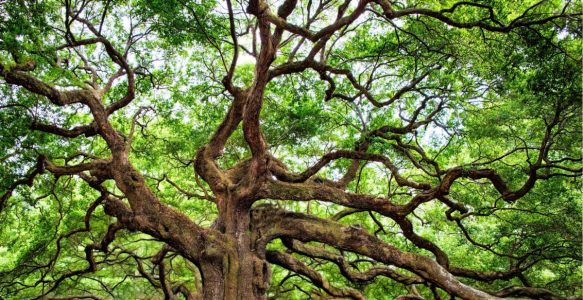The volunteers at EPIC-FSC (Emergency Preparedness in Calabasas), in partnership with the City of Calabasas, honor a local firefighting legend! The iconic coast live oaks, which grace our parks, canyons, and neighborhoods with their strength and beauty, provide more than just a scenic background. What makes the oak tree mighty? Their deep roots act as natural allies in wildfire defense. Integrating native oaks and other fire-resistant plants into your landscaping can enhance our entire community’s resilience and build a more fire-ready Calabasas.

The Mighty Oak
Native oaks maintain moisture throughout the year and serve as natural windbreaks, helping to prevent ember spread. Their bark and leaves are less likely to ignite. Oaks stabilize slopes, improve soil quality, and reliably resprout after fires, making them beneficial for both fire safety and the environment.
Are All Native Plants Fire Safe?
Not always. While native plants are adapted to the local climate, some—especially those with high oil content—can be highly flammable and burn hot and fast and should not be planted near your home. Some examples include:
- Pine
- Juniper
- Italian Cypress
- Cedar
Use with caution near structures:
- Lavender
- Sage
- Eucalyptus
These fragrant favorites contain volatile oils that can increase fire risk. You don’t have to remove them entirely—but it’s wise to plant them farther from buildings and prune them regularly to reduce flammable mass.
Fire-Safe Native Plants for Calabasas Residents
However, some natives are fire-resistant, including:
Succulents (Great for defensible space and borders)
- Dudleya spp. – California native succulents with silvery rosettes
- Agave shawii – Coastal agave, compact and architectural
- Opuntia spp. – Native prickly pear cactus (fire-resistant once mature)
- Hesperoyucca whipplei – Chaparral yucca (a striking, drought-hardy choice)
- Sedum spathulifolium – Stonecrop, low-growing and mat-forming
Groundcovers
- Arctostaphylos uva-ursi (Bearberry) – Fire-resistant groundcover manzanita
- Ceanothus ‘Anchor Bay’ or ‘Yankee Point’ – Low-growing California lilac
- Salvia sonomensis (Creeping Sage) – Spreads beautifully, blue flowers
- Eriogonum latifolium (Coastal Buckwheat) – Tough and great for pollinators
Shrubs
- Artemisia californica (California Sagebrush) – Aromatic and fire-wise when pruned
- Rhamnus californica (Coffeeberry) – Dense and green year-round
- Malosma laurina (Laurel Sumac) – Can be fire-safe if maintained, not ideal close to structures
- Salvia clevelandii (Cleveland Sage) – Fragrant and pollinator-friendly
- Encelia californica (California Brittlebush) – Golden flowers and low flammability

Trees (Use sparingly and keep trimmed)
- Quercus agrifolia (Coast Live Oak) – Deep-rooted and naturally fire-resistant
- Platanus racemosa (Western Sycamore) – Good shade and less flammable
- Cercis occidentalis (Western Redbud) – Smaller native tree with spring blooms
Tips for Maintaining Fire-Safe Landscaping
- Create defensible space: Maintain a 5-foot non-combustible zone around your home (use gravel, flagstone, or low succulents).
- Remove dead plant material regularly, especially in summer and fall.
- Space plantings to prevent fire from laddering from ground to canopy.
- Water deeply but infrequently to promote deep roots without overgrowth.
Low-Cost Fire Safety You Can Do Today
NOW is the time to get wildfire ready. Begin by scheduling your FREE Home Hardening Assessment from the experts at EPIC-FSC. Here are some other things you can do today:
- Clean your gutters – Dry leaves, pine needles and oily eucalyptus debris are like kindling.
- Replace vent screens – Should be 1/8” or 1/16” wire mesh to keep embers out.
- Rake under eucalyptus and pines – Maintain a debris-free zone near your home.
- Evaluate your landscaping – Are flammable plants growing too close to your siding or under windows? We will alert you to potential fire risks and suggest ways to mitigate them during your free Home Hardening Assessment.
Remember: the goal isn’t perfection—it’s progress. Every homeowner who takes even small steps toward fire-hardening their property increases the resilience of our entire community.
Want to Plant More Oaks?
Calabasas strongly supports the preservation of native oaks through its Oak Tree Ordinance, which requires the replacement of trees when they are removed.
If you’re interested in planting oaks or other trees:
- Contact Calabasas Planning for guidance and approved species.
- Reach out to RCDSMM (Resource Conservation District of the Santa Monica Mountains) to learn about native tree restoration programs.
- Explore opportunities with organizations like the Theodore Payne Foundation, which offers native saplings and hosts community planting days.
Fires Are Inevitable. Your Home Burning Isn’t.
We live in a fire-prone environment, but we don’t have to live in fear. Let’s lead by example. Let’s protect what we love. Let’s build a safer, more resilient Calabasas—starting in our own backyards.


